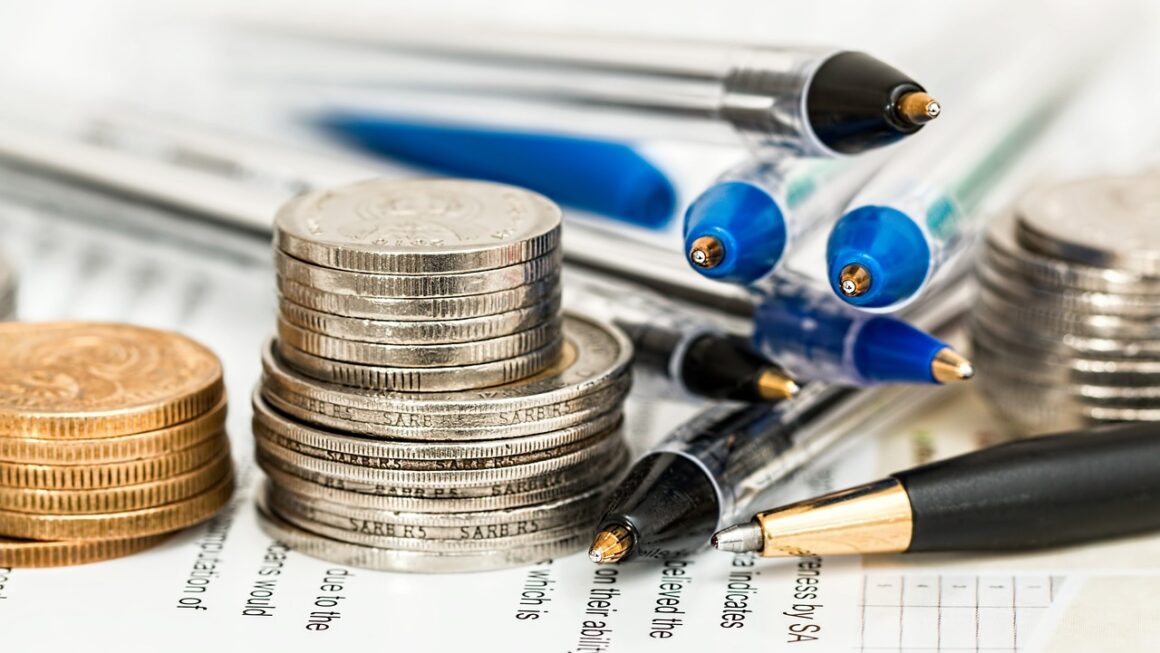Imagine a financial safety net woven from threads of savings, ready to catch you when unexpected life events threaten to knock you off balance. That’s the essence of an emergency fund – a crucial component of sound personal finance that provides peace of mind and prevents financial ruin during unforeseen circumstances. In this guide, we’ll explore the importance of building and maintaining an emergency fund, how to determine the right amount for your needs, and practical tips to get started.
What is an Emergency Fund?
An emergency fund is a readily available pool of money specifically set aside to cover unexpected expenses or financial emergencies. It’s not an investment account meant for long-term growth; rather, it’s a safety cushion designed to prevent you from going into debt when life throws you a curveball.
Why is an Emergency Fund Important?
- Covers Unexpected Expenses: Life is unpredictable. Car repairs, medical bills, home repairs, and job loss can all strike unexpectedly. An emergency fund provides the resources to handle these situations without resorting to credit cards or high-interest loans.
- Prevents Debt Accumulation: Without an emergency fund, you might rely on credit cards to cover unexpected expenses. This can quickly lead to a cycle of debt, as interest charges accumulate and make it difficult to repay the balance.
- Provides Peace of Mind: Knowing you have a financial safety net in place reduces stress and anxiety associated with potential emergencies. This peace of mind allows you to focus on other aspects of your life without constantly worrying about financial instability.
- Avoids Selling Investments at a Loss: In times of crisis, you might be forced to sell investments to raise cash. This can be particularly detrimental if the market is down, leading to losses and hindering your long-term financial goals.
Real-Life Examples
- Example 1: Sarah’s car breaks down, requiring a $1,500 repair. Because she has an emergency fund, she can pay for the repair immediately without taking out a loan or using her credit card.
- Example 2: John loses his job unexpectedly. His emergency fund allows him to cover his living expenses for several months while he searches for new employment, avoiding the stress of immediate financial hardship.
- Example 3: A pipe bursts in Maria’s home, causing $3,000 in damage. Her emergency fund allows her to pay for the necessary repairs without derailing her long-term savings goals.
How Much Should You Save?
A common recommendation is to save 3-6 months’ worth of living expenses in your emergency fund. However, the ideal amount can vary depending on your individual circumstances and risk tolerance.
Determining Your Monthly Expenses
The first step is to calculate your average monthly expenses. This includes:
- Housing: Rent or mortgage payments, property taxes, homeowner’s insurance
- Utilities: Electricity, gas, water, internet, phone
- Transportation: Car payments, insurance, gas, public transportation
- Food: Groceries, dining out
- Healthcare: Insurance premiums, co-pays, prescriptions
- Debt Payments: Credit card bills, student loans, personal loans
- Other Essential Expenses: Childcare, pet care, personal hygiene
Use a budgeting app or spreadsheet to track your spending for a few months to get an accurate estimate of your monthly expenses.
Factors Affecting Your Target Amount
Consider these factors when determining the ideal size of your emergency fund:
- Job Security: If you work in a stable industry with high demand for your skills, you might be comfortable with a smaller emergency fund (3 months). If your job is less secure, aim for a larger fund (6 months or more).
- Income Stability: Freelancers or those with variable income should aim for a larger emergency fund to cover fluctuations in income.
- Health: If you have chronic health conditions or a family history of health issues, a larger emergency fund can provide peace of mind.
- Dependents: Having dependents (children, elderly parents) increases your financial responsibilities and necessitates a larger emergency fund.
- Insurance Coverage: Adequate health, car, and homeowners insurance can reduce your out-of-pocket expenses in case of emergencies, potentially allowing for a slightly smaller emergency fund.
Example Calculation
Let’s say your average monthly expenses are $3,000.
- 3-month emergency fund: $3,000 x 3 = $9,000
- 6-month emergency fund: $3,000 x 6 = $18,000
Where to Keep Your Emergency Fund
The ideal location for your emergency fund is an account that is easily accessible, liquid, and safe.
High-Yield Savings Account
- Pros: FDIC-insured, easy access, relatively high interest rates compared to traditional savings accounts.
- Cons: Interest rates may not keep pace with inflation.
- Example: Online banks often offer higher interest rates on savings accounts than traditional brick-and-mortar banks.
Money Market Account
- Pros: FDIC-insured, may offer slightly higher interest rates than high-yield savings accounts, often come with check-writing privileges.
- Cons: May have minimum balance requirements or transaction limits.
Certificate of Deposit (CD) Ladder
- Pros: Can potentially earn higher interest rates than savings accounts, provides some liquidity as CDs mature at different intervals.
- Cons: Less liquid than savings accounts or money market accounts, early withdrawal penalties may apply.
- Example: Invest in CDs with maturities of 6 months, 1 year, 18 months, and 2 years. As each CD matures, reinvest it in a new 2-year CD.
Avoid Risky Investments
- Do not keep your emergency fund in stocks, bonds, or other investments that could lose value. The goal is to preserve capital and have funds readily available when needed.
How to Build Your Emergency Fund
Building an emergency fund can seem daunting, especially if you’re starting from scratch. However, with a consistent plan and disciplined saving habits, you can reach your goal.
Set a Savings Goal and Timeline
- Determine how much you want to save and set a realistic timeline for achieving your goal. Break down the total amount into smaller, manageable monthly or weekly savings targets.
Create a Budget
- Track your income and expenses to identify areas where you can cut back and save more money. Use a budgeting app or spreadsheet to stay organized.
Automate Your Savings
- Set up automatic transfers from your checking account to your emergency fund savings account. This makes saving effortless and ensures consistent progress.
Find Extra Income
- Consider taking on a side hustle or selling unwanted items to boost your savings. Even small amounts can add up over time.
Reduce Expenses
- Look for ways to reduce your monthly expenses, such as cutting back on dining out, canceling unused subscriptions, or negotiating lower rates on your insurance policies.
Practical Tips
- Start Small: Begin with a small, achievable goal, such as saving $500. Once you reach that goal, you’ll be motivated to continue saving.
- Treat it Like a Bill: Consider your emergency fund contribution as a non-negotiable expense, just like rent or utilities.
- Use Windfalls Wisely: Direct any unexpected income, such as tax refunds or bonuses, towards your emergency fund.
- Stay Consistent: Even small, consistent contributions will eventually add up to a substantial emergency fund.
Maintaining Your Emergency Fund
Once you’ve built your emergency fund, it’s important to maintain it and replenish it after using it.
Replenishing After Use
- If you have to use your emergency fund, make it a priority to replenish it as quickly as possible. Adjust your budget to allocate more money towards savings until you reach your target amount.
Reviewing and Adjusting Regularly
- Review your emergency fund periodically (at least once a year) to ensure it still adequately covers your needs. As your income and expenses change, you may need to adjust the size of your fund.
Avoiding Temptation
- Resist the temptation to use your emergency fund for non-emergency expenses. Keep it strictly for unexpected situations that could jeopardize your financial stability.
Example Scenario
- You use $2,000 from your $15,000 emergency fund to cover unexpected medical bills. Immediately adjust your budget to allocate an extra $500 per month towards replenishing the fund. Within four months, your emergency fund is back to $15,000.
Conclusion
Building and maintaining an emergency fund is a cornerstone of financial security. It provides a safety net to handle unexpected expenses, prevents debt accumulation, and offers peace of mind. By following the steps outlined in this guide, you can create a solid foundation for your financial future and protect yourself from life’s inevitable surprises. Start small, stay consistent, and watch your savings grow into a valuable resource that will empower you to navigate financial challenges with confidence.




